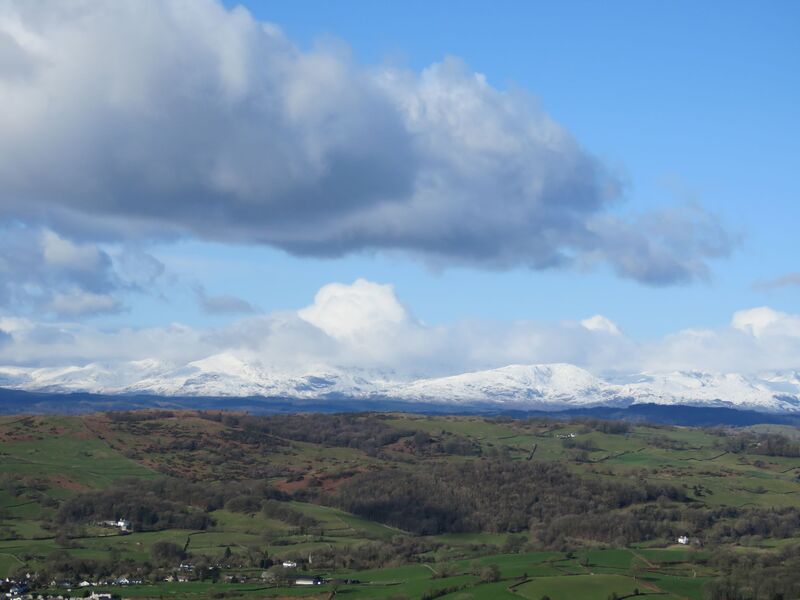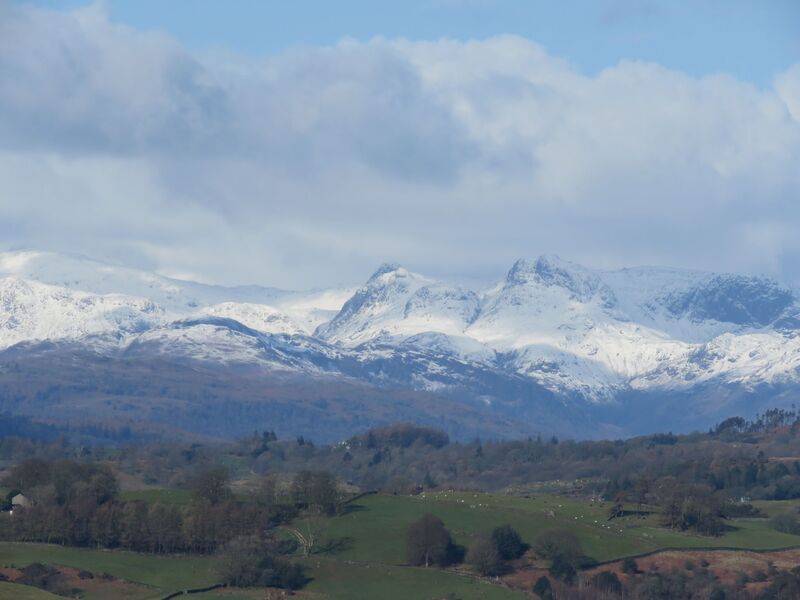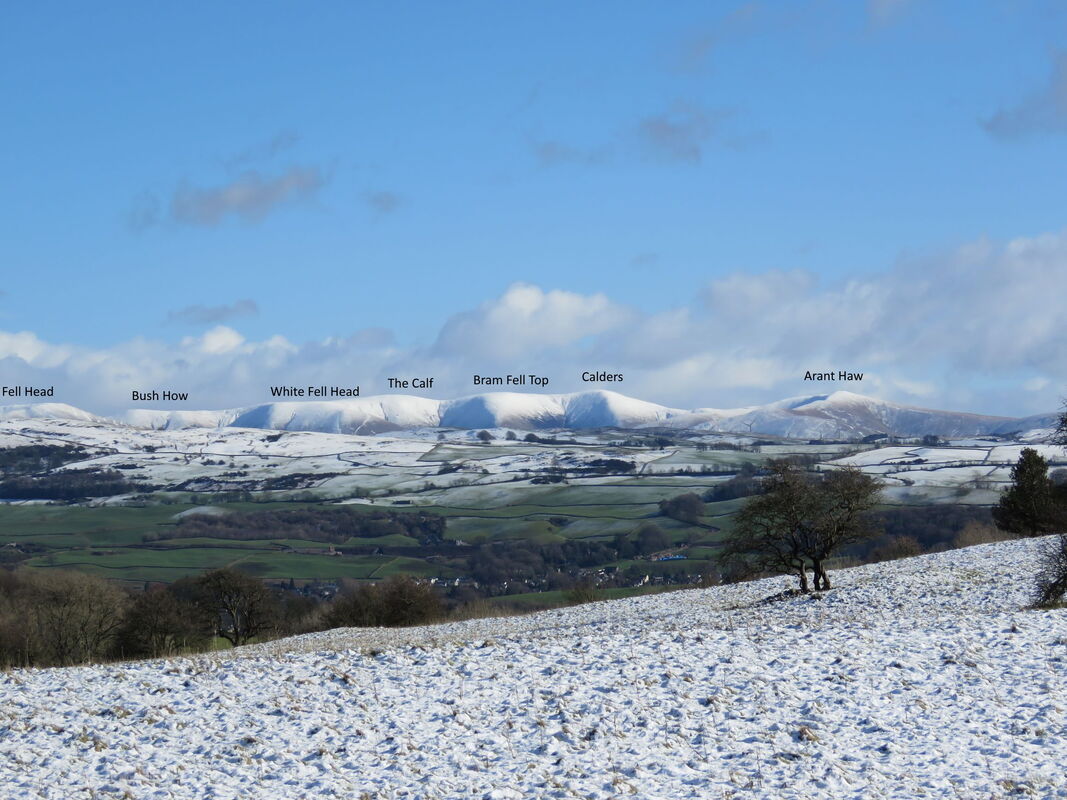 The Howgills, looking east from Scout Scar
The Howgills, looking east from Scout Scar Up on Scout Scar there's a panoramic view. We are encircled by sunlit, snow-clad fells.
The Howgills are distinctive fells, rounded and grassy- smooth and voluptuous under snow. Stone walls show dark and gullies gleam, packed dense with snow.
To the north and west, the Lake District fells have a different geology, a different configuration..
Dike/dyke - of Old Norse origin, a ditch, a watercourse, an embankment. I wonder if a dike-reeve was appointed by the Court of Sewers to take charge of the drains and sea-banks in the south west of Cumbria and the Lyth Valley.
How many of those landscape features are familiar to you?
RIgg- a ridge, Northern and Scots geography
Lambrigg Fell- lots of folk pronounce it Lam Brigg- which ignores the meaning of rigg - Lamb -Rigg
Haw- as in Arant Haw. 'Enclosure' seems rather odd and that's the only definition I've found.
We walk the Howgills with theses words tripping off the tongue. The Mushroom Shelter had a map inscribed within its dome, so you could name the peaks of the panorama. Now the map is weathered and worn away. Folk delight in a naming of tops but what about the names themselves, their origin? And the peoples who first used these descriptive words.
What you see below, on the Howgills, is cloud upon cloud. Cloud is atmosphere and the fells below. I love to see a fusion of cloud and fell and to know that the word, in its origin, is all-encompassing.
with thank to Geoff Brooks for identifying the Howgill tops.
Saturday 29th February 2020 and Storm Jorge hits Cumbria as darkness falls. The third named storm on consecutive week-ends: Ciara, Dennis and Jorge. February is usually the driest of the three winter months. This February has broken all records as the wettest.











 RSS Feed
RSS Feed